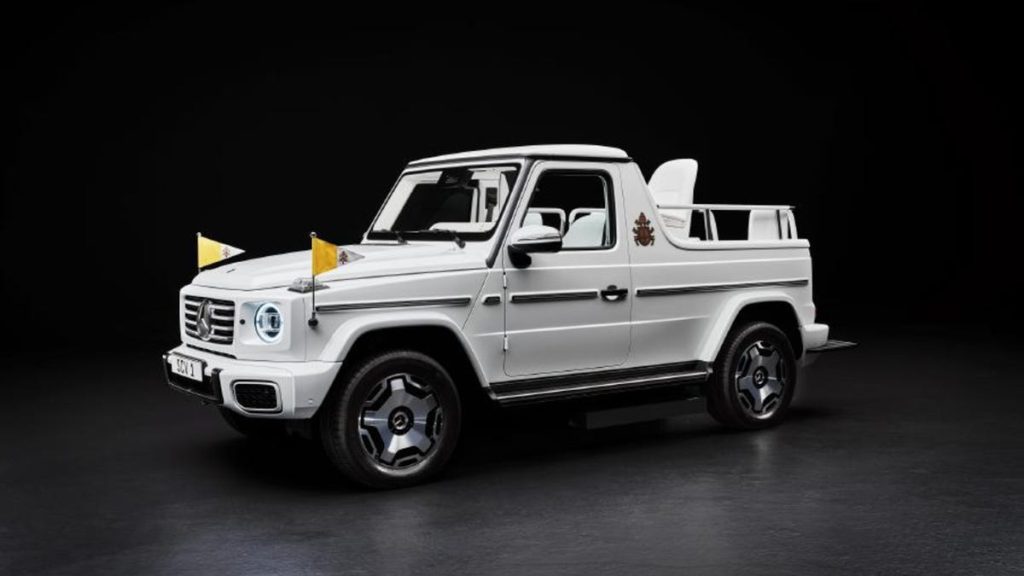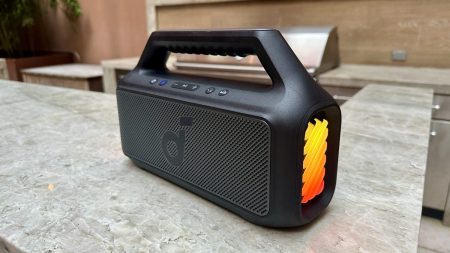The newly unveiled all-electric Popemobile for Pope Francis marks a significant milestone in the history of papal transportation. Presented by Mercedes-Benz representatives at the Vatican, the vehicle not only embodies innovative design but also sends a strong message about the Catholic Church’s commitment to sustainable practices. Mercedes-Benz CEO Ola Källenius emphasized the company’s initiative towards electromobility and decarbonization, reinforcing the global movement towards cleaner energy. This state-of-the-art Popemobile is set to play a pivotal role during the upcoming Jubilee Year scheduled from December 26, 2025, to January 6, 2026, which is expected to draw millions of pilgrims to the Vatican.
The new Popemobile is tailored to meet Pope Francis’s specific requirements, with modifications that suit the slow-speed, public-facing nature of his engagements. Built on the foundation of the new electric G-Class, the vehicle features an electric drivetrain specifically adapted for gentle travel. A standout aspect of its design is the single, centrally-positioned and height-adjustable seat for the pope, which swivels to allow him to engage with audiences from various angles. With enhancements such as heating for the papal seat and added security measures, the vehicle ensures that the pope remains comfortable while still able to interact closely with the public.
The design of the Popemobile also includes two additional single seats for passengers, offering flexibility in carrying members of the papal entourage. The classic pearl white finish, a staple of past Popemobiles, adds a sense of continuity with tradition while the removal of the roof beyond the B-pillar signifies an open and accessible interaction with the crowd, albeit with a separate hardtop for protection in inclement weather. With its upgraded styling and operational features, this rendition of the Popemobile is not just a vehicle but a symbol of modernity and an environment-friendly future.
Despite the innovations, the Vatican remained tight-lipped regarding any specific security details for the vehicle, a standard practice given the longstanding emphasis on safety in the design of Popemobiles. Historically, these vehicles have been outfitted with bulletproof glass and reinforced materials ever since the serious security incident involving Pope John Paul II in 1981. The legacy of safety continues as Mercedes-Benz has been producing papal transportation since 1930, and each subsequent design has improved upon the last to meet the evolving demands placed on the papacy.
The Popemobile’s evolution into an electric vehicle aligns with rising global consciousness about climate change and environmental stewardship. Pope Francis has been an advocate for ecological sustainability, as seen in his encyclical, “Laudato Si’,” which calls for responsible management of resources and the protection of the environment. By embracing electric technology in the Popemobile, the Vatican underscores its commitment to these values, setting a powerful example for both its followers and the world at large.
Public perception often blends humor with reverence when it comes to the Popemobile, as highlighted by a quirk in its naming history. The vehicle has been dubbed the “Popemobile,” a term requested by John Paul II to be discontinued due to its perceived lack of dignity. However, this request has largely fallen on deaf ears, as evidenced by the continued widespread use of the nickname. This element of cultural commentary reflects the intersection of tradition and modernity, illustrating how elements of the papal presence continue to evolve while retaining warmth and familiarity. As Pope Francis prepares to take the wheel of this iconic vehicle, it embodies not only his mission but also a forward-thinking approach to leadership in an era concerned with sustainability and social responsibility.










